The Agony of Defeat

"Your Pretty Face is Going to Hell" is on the Raw Power album by Iggy and the Stooges. "Your Pretty Face is a goin' to hell. Funny honey, I can't tell..." The song describes my sense of the state of architectural stewardship and legacy in the core of the city of Washington.
The beauty of the built environment, particularly Downtown and the similarly intensely developed areas around Downtown, is rapidly declining in the face of value-engineered boxes constructed of garish glass, concrete, and cheap brick.
In the great scheme of things, the number of DC citizen advocates concerned with quality design, urban design, and the maintenance and extension of livability and placemaking seems to be pretty meager. I judge that on the basis of my involvement in neighborhood land use issues for the last five years. There are plenty of people who know stuff, and who get involved in issues from time-to-time, but day-in, day-out advocacy for quality is pretty rare.
For about three years I have participated on the Planning and Zoning Committee for ANC6C, the neighborhood citizen commission, called an "Advisory Neighborhood Commission," the organization that weighs in on matters before various government bodies such as the Zoning Commission, the Board of Zoning Adjustment, and the Historic Preservation Review Board, as well as government agencies such as the Dept. of Transportation and the Office of Planning, as well as federal bodies that have oversight on land use decisions impacting the federal interest, such as the National Capital Planning Commission.

In the distance lies the old art deco Woodward & Lothrop Warehouse (now called One NoMa Station), Washington DC, photo www.beyonddc.com. Another warehouse building, used for rental storage, lies further north, across from McKinley Technical High School.
ANC6C includes a big chunk of one of the hottest development areas in the city, a large area east of the main center of Downtown, ending on 2nd Street, just past Union Station. The area includes a variety of separately named sub-districts, such as the East End, Mount Vernon Triangle, NoMa (north of Massachusetts), the Union Station office sub-district, etc. The land use questions that come before the committee involve hundreds of millions of dollars, and a fair amount of high-priced legal talent. It makes for an interesting agenda, where you weigh in on significant decisions and matters that truly impact what the city will look and feel like for decades.
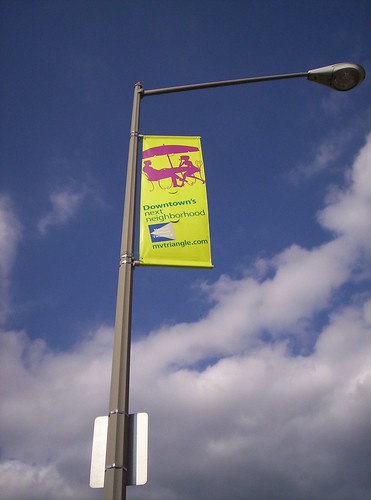
Market development on Sixth Street NW.
I haven't seen a comprehensive "build-out" analysis for the area, but I am sure that it encompasses upwards of 30 million square feet of office space (this is probably a low estimate), as many as (or more than) 20,000 new high-density dwelling units, and a variety of commercial space uses ranging from retail to hotel. We are talking about billions and billions of dollars of development. More than $100 billion easy.
It's not like I know a lot. But urban design, land use, and urban planning and revitalization are an avocation, so over the past few years I have put a lot of time and effort into learning about the issues, and in some respects it has paid off. I have a standing offer for a fellowship for a PhD in urban planning, and I have influence through my participation in a variety of professional discussion groups, at conferences, and the like. In other cities, people even follow up and implement my informed suggestions.
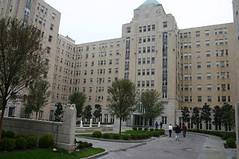
Kennedy Warren Apartments, Connecticut Avenue NW, Washington DC. Originally constructed in the late 1920s, with a "new" addition conforming to original plans constructed within the last two years.
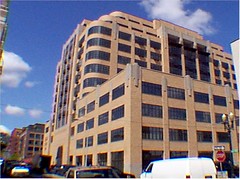
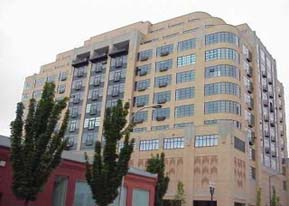
Two views of the Gregory Building, Portland, Oregon. Constructed in 2000. Nice art deco details referencing warehouse and distribution buildings in the area that was once a major freight railyard.
Despite all the presentations before the committee, where I have repeatedly made points about the principles of urban design, pedestrian-centricity, urban rather than suburban design sensibilities, people rather than cars, context-sensitive design and site planning, the importance of referencing historically sensitive design cues present in still extant buildings along the Northeast rail corridor, it has had little impact within the committee.
A couple committee members make comments about design, but rarely do they follow through with amendments to motions that advocate for quality.
Some developers have responded, at times, to some of the points made, particularly in the selection of materials more appropriate to Washington, DC and in particular, the greater Capitol Hill neighborhood, but many have not.
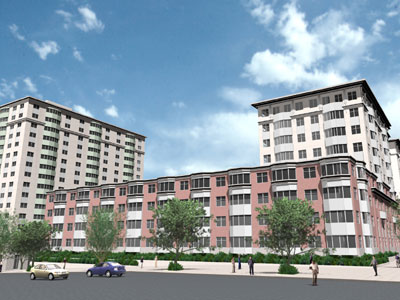
Renderings, 200 K Street NE, Washington, DC. Source: FLGALLC Real Estate Group, partners with the Cohen Companies on this project.
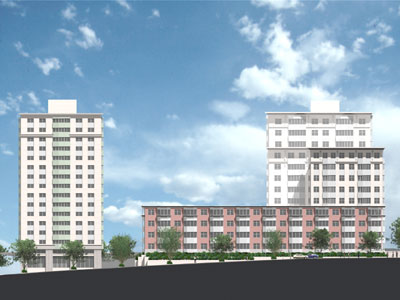
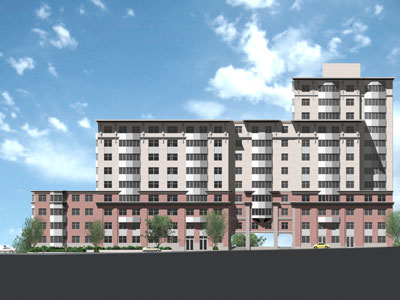
The 200 K Street NE project is particularly galling. When finished it will occupy an entire square. It will look the way it will look for decades. Despite my efforts, the committee worked hard to ignore the banality of the design. They succeeded, and the neighborhood will be poorer for their lack of effort. (But then its not all their fault. What about the Zoning Commission and the Office of Planning?)
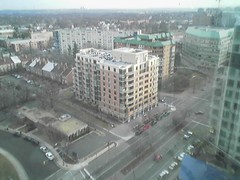
Ballston from the 20th Floor, photo by Craig Pfeifer.
A dull, Ballston-like design (note: this is code for "suburban sameness") does little to extend and improve the built environment in the neighborhood. This, as I point out time and time again, is the architectural legacy we are leaving.
On the other hand, below are photos of some of the architectural legacy that has been left to us, it is this legacy that we are responsible for stewarding today.
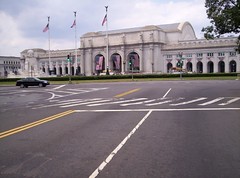
Union Station, Fourth of July.
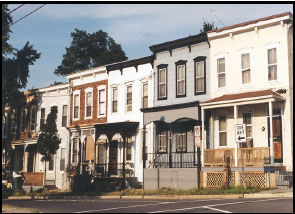
Rowhouses in Anacostia, Washington, DC.

Former Newton Theater, Brookland, Washington, DC.
One area where I sound like a broken record concerns what I see as over-fealty to the car. Fortunately, this auto-centricity will be mediated over time by a couple factors. First, despite the clamoring for one-for-one parking for the large residential buildings being built along the rail corridor, these future residents will be particularly well-situated and will enjoy particularly excellent transit access to the Union Station and New York Avenue subway stations, as well as to future streetcar lines. Down the "road," more of these residents will not own cars at all.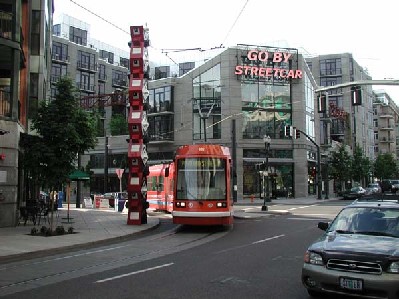
The Portland (Oregon) Streetcar system is a good example for Washington, and could be a particular useful strategy for improving mobility and reducing car dependence in the NoMa area.
While the Planning and Zoning Committee has, in the past, encouraged developers such as Abdo Development to include shared car parking on site, such a practice hasn't been adopted by the committee in a systematic manner. Whereas in this development in Philadelphia (see "Teams vie to develop an East Falls site"), one of the firms vying for the right to develop the project has included a membership in a local car sharing service for every dwelling unit. Second, the decline in the availability of cheap oil will likely reduce car acquisition and use, particularly amongst city dwellers. But still, it's galling to have to deal with the parking issue meeting after meeting after meeting.
Finally, unless an area is a designated historic district, there are no provisions for design review in DC land use regulations. DC, compared to so many cities across the country, is backwards in its approach to this issue. And as a result, the overall quality of the built environment continues (at least in my opinion) to decline.
There has to be a better way.
Ignorance is no defense.
Labels: asset-based community development, bad government, capacity building, civic engagement, good government, government oversight, urban design/placemaking, urban revitalization



0 Comments:
Post a Comment
<< Home